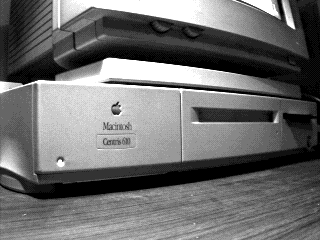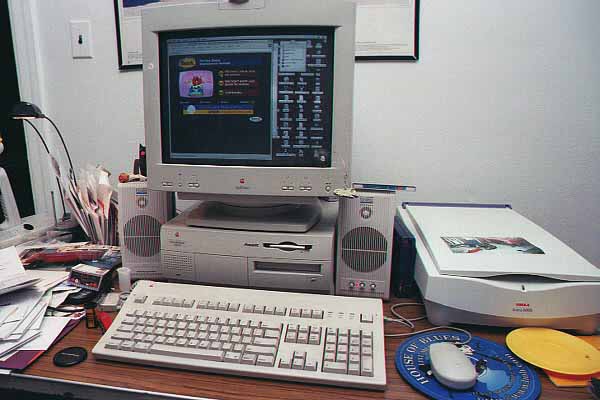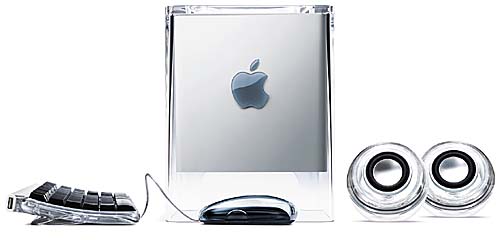Nothing but Macintosh since 1985Here's the current list. So far I have:
I also have a bunch of other interesting items:
I also have crunched through the following iPhones:
But why all these Macs? Here is the original story written up in the 90's... I first saw the Macintosh in a computer shop in 1984, and I couldn't believe what I was seeing. It made so much sense, the graphical interface, the idea that so much was built into the machine, the seamless way it operated. So in 1985 I bought one. I got a 128k Macintosh even though the 512's were out. This has been a pattern that has persisted to this day. I got an SE/30 in 1990 just before they were discontinued and the Centris 610 pictured below that I bought in 1993 was only on the market for about 9 months. Of course, they're all like that now.  After that, I got a Mac 7500/100. This was back in 1996, and at the time, it was a pretty hot machine. The thing that makes this old girl truly amazing is its upgradability. You can replace the CPU simply by removing the daughter card containing it and substituting a new one. The current Jobsian machines lack this basic feature included in the 7500. It was supplied originally with a first generation PowerPC 601 chip of only 100Mhz. I picked up a 604/120 card a few months later for $99, and I was amazed at the improvement--at the time. I also decided to pump it up with 160MB of RAM. Then I got a Newer Technology (R.I.P.) 400Mhz G3 card. The 400Mhz card allows the bus to run at its (don't laugh!) full 50Mhz speed. Updated with an ATI Rage Orion video card, the box is nearly as fast as a new G3. And, of course, my 33.6 modem (which never seemed to connect any faster than 31.2) was replaced with a new Global Village TelePort 56K modem, which routinely connects at well above 49K. The machine is running Mac OS 9.

The latest addition to my Macintosh family is the new G4 Cube. Along with the 17" Studio Monitor, it'll soon take over as the main machine. Sometime I'll take my own pictures of it.

Now I've got a Power Macintosh G5 Dual 1.8GHz. This is the fastest computer I've ever owned. The Cube just couldn't do the video editing I wanted to do, and it was time for my 4 year computer replacement. It has 1.25GB of memory, an 80GB hard drive and Airport Extreme. Iwas connected to the internet via the 56K modem in an AirPort, which besides providing wireless communications to the Cube and my wife's iBook, is also serving as a bridge to the wired Ethernet system I'm setting up. A Farallon iPrint adapter allows me to add my Local talk printer and any other LocalTalk devices I may want to add. I finally got DSL through DirecTV DSL. It's pretty good for the price, especially considering you get a fixed IP. Then DirecTV DSL went out of business, so I moved to Sonic.net. They are great, and I have 6M/608k service. It's fast and the customer support is great. I'm even hosting my website there now. Sonic started offering basically wholesale AT&T U-Verse in my neighborhood, so I have that and am getting 22M/1.9M. On March 24th 2001, you'll be able to buy Mac OS X, an operating system based on BSD Unix. I've tried the beta, and I've never seen a better Unix shell. I read these fine Mac web pages:
More propaganda. Back to Bob's home page This page created and modified hourly by Bob R. Kenyon ©2024 |